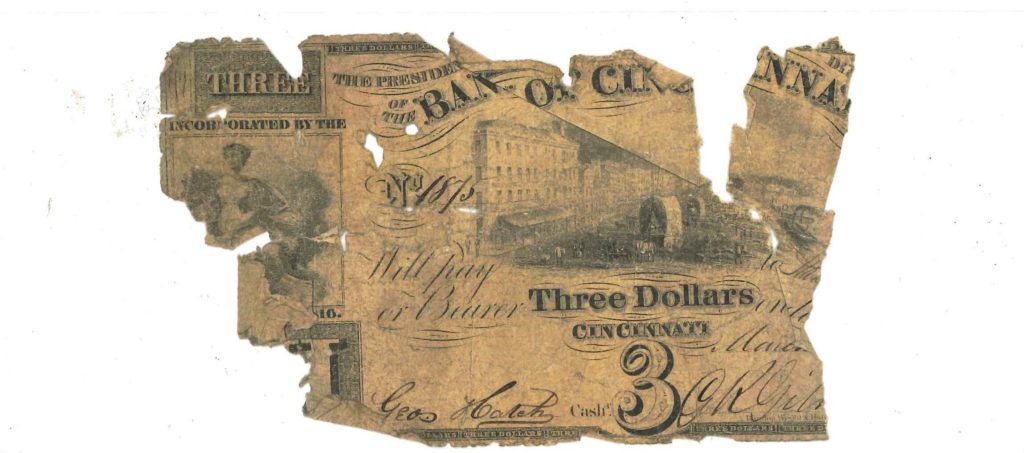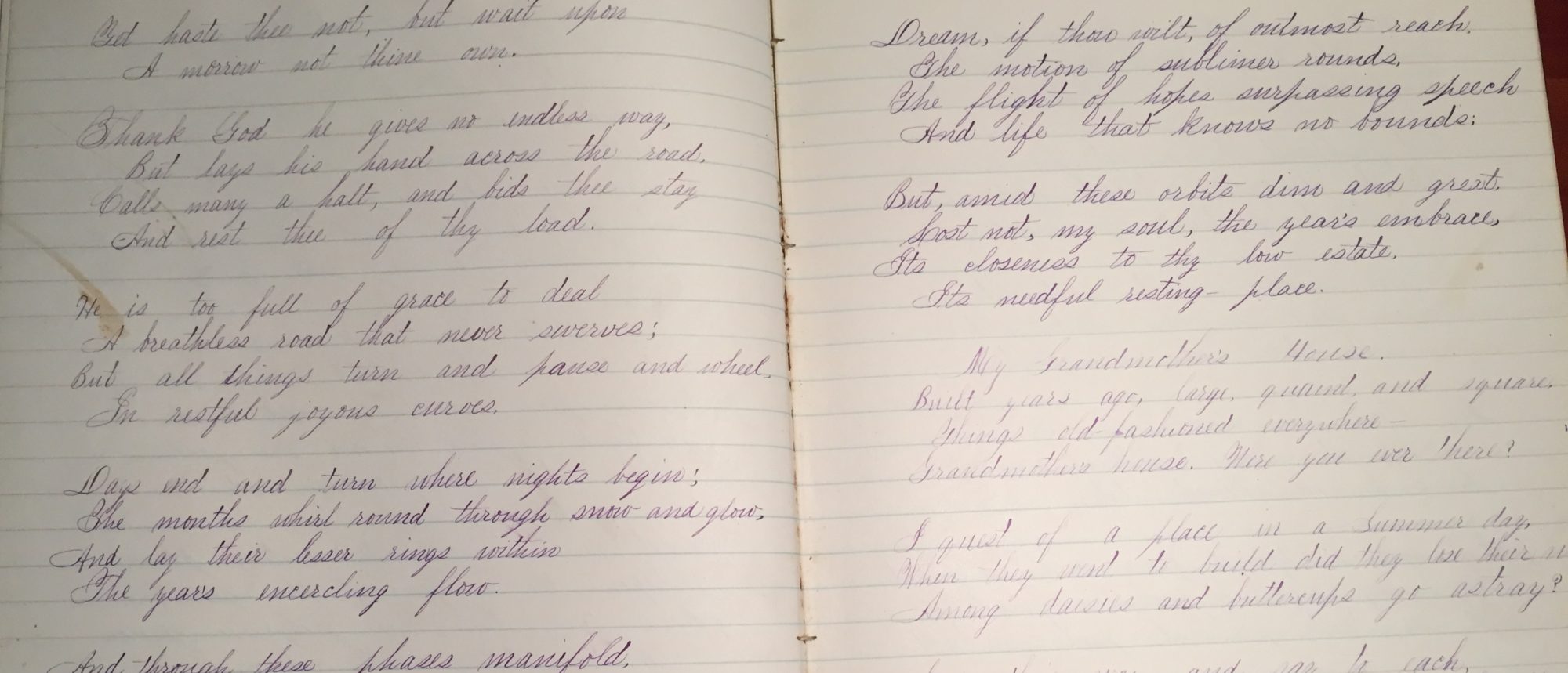
Dead sea scroll fragment??.. Close, yet not quite. Common knowledge dictates that a three dollar bill should be a “fake”. Well, here is one. As a matter or fact there are lots of these three dollar bills and they can command large sums of money. Research into the authenticity of this bill leads to interesting facts. It turned out that the Federal government never printed any denomination of this sort. As a mater of fact, the US government did not print its own currency until the civil war (mid 1800s), preferring to use gold and silver for purchases. Notes were IOU’s called legal tender or Demand Note. For this reason local banks and railroad were able to print currency. Anyone that can back the printed note with gold or silver was able to print them.
Lots of colorful currency made it to the markets, with idyllic scenes and patriotic themes. Depending on the issuing bank, there would be farming, railroad, or some famous city landmark on the printed bills. Interesting fact is that the limited availability of the printed notes made foreign money from pesos to other denominations accepted legal tender in most states. Local banks printed notes values fluctuated when used locally vs other towns/states. It was even possible to buy tender steeply discounted (outside the original market) and then sell back to the issuing bank for profit. So in the Civil War tender went up and down depending on the conduct of war, as both North and South printed money. it was not surprising to see 1000, 5000, 10000 notes as well as fraction ones, 25 and 50 cents. The advent of technology made many of these denominations obsolete. As for printing notes altogether, only with the establishment of the Bureau of Engraving and Printing that this practice slowed and eventually ceased.
The picture above is of a 3-dollar bill from the Bank of Cincinnati. It is signed by George Hatch, the mayor of Cincinnati (from 1861-1863). The faint block print shows the bustling commerce of Cincinnati and its riverfront on the Ohio, where the port teemed with steam boats. At that time, Cincinnati earned the nickname Porkopolis for being a chief hog packing center. Rich history has Cincinnati earning other names: “City of Seven Hills”and “Queen of the West.”..
Aside from being a crucial station on the Underground Railroad, Cincinnati was known as a manufacturing and commerce town. Big industries from the 1800 and throughout the 20th century (especially for the world wars efforts) churned machines that literally “made” American machine shops and factories. On the lighter side, a little known fact is that Cincinnati was a national beer brewing hub (thanks to the city’s influential German heritage), and a proud home of a strange concoction, called the Cincinnati “Chili”–made out of spaghetti and a meat sauce, adored by fans, and despised by many– (thanks to the city’s old Greek diaspora.) Also, Cincinnati has many firsts: the first AM radio station (WLW), the first licensed public TV station (WCETV-TV), and the first city in the world for having a paid fire department and for using steam fire engines.
As for the 3-dollar bill, it would be interesting to know what role the city government had in printing this money (Hatch’s signature,) as the mayor in Cincinnati and not a banker, when the printing is normally done by local banks (is it to lend legitimacy?). For this piece, it is hard to tell whether Hatch’s signature is hand written or part of the engraving. An examination of similar examples from other banks shows the signatures as authentically hand-written. As for Hatch, he had an interesting presence in the history of Cincinnati and the Civil War, from when the Confederate forces were about to cross the Ohio River into Indiana (and Cincinnati), to the protest for the creation of “The Black Brigade of Cincinnati” –a military unit that was organized in 1862 to defend the city (another first.) –If this tattered piece of paper could speak!!
